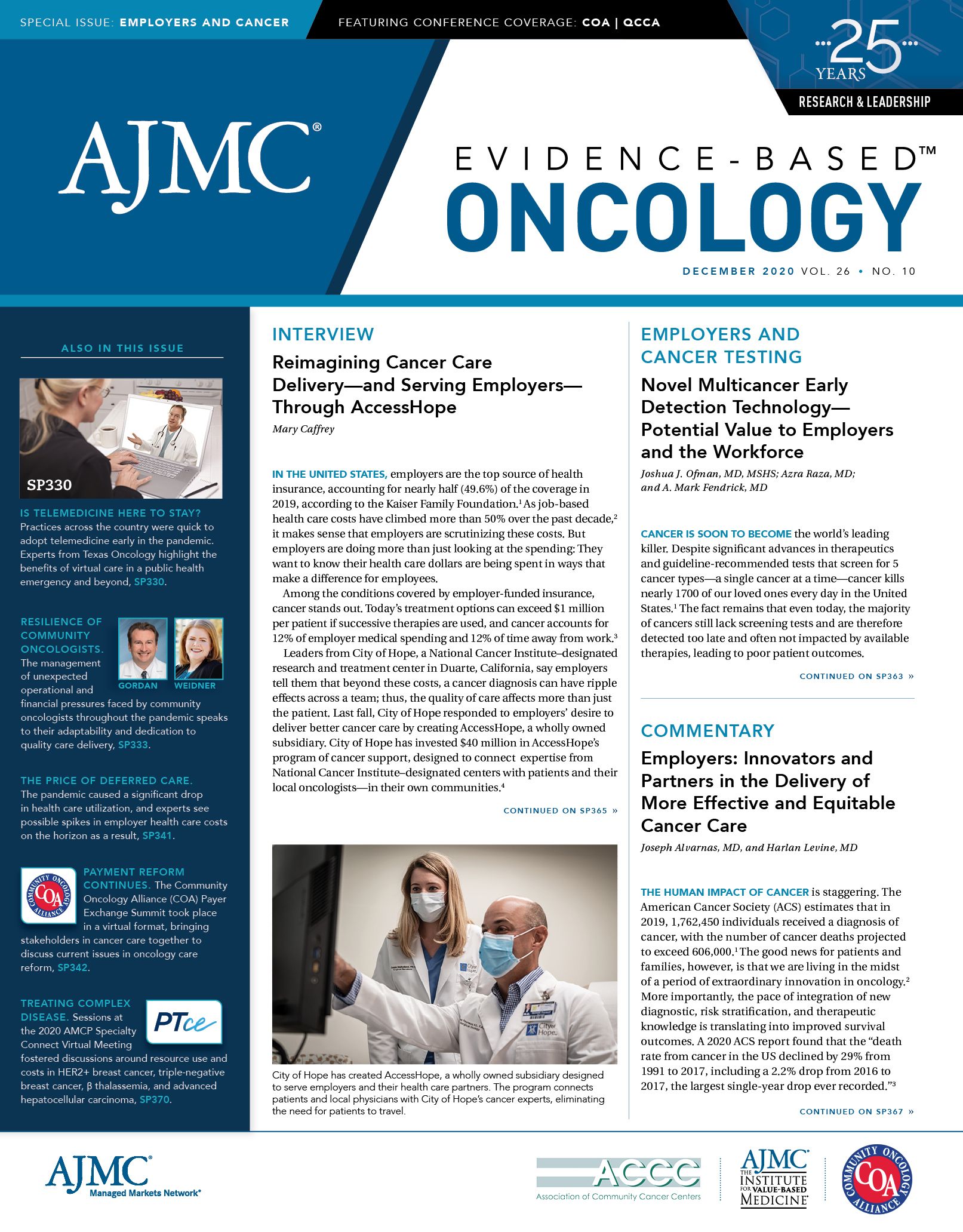- Center on Health Equity & Access
- Clinical
- Health Care Cost
- Health Care Delivery
- Insurance
- Policy
- Technology
- Value-Based Care
Hodgkin Lymphoma Patients Face Noncancer Death Risk Despite Modern Therapies
A study and accompanying editorial from the Journal of Clinical Oncology found that Hodgkin lymphoma survivors still face a higher risk of non-cancer death than the general population.
Although classical Hodgkin lymphoma (cHL) is a highly curable cancer and treatment methods continue to evolve, patients are still at a higher risk of non-lymphoma death from causes that may be preventable, a study published in the Journal of Clinical Oncology found.1 In an accompanying editorial, authors explored the implication that post-acute morbidity and late effects of modern frontline courses of treatment continue to negatively impact patients.2
Despite high survival rates for cHL, which accounts for 9 in 10 cases of Hodgkin lymphoma (HL) in developed countries,3 treatment-related toxicities and late effects, such as secondary malignant neoplasms (SMNs) and cardiovascular disease (CVD), have an adverse impact on survival. Part of this has to do with the young age of many cHL patients, as the editorial points out. It is especially common in people 20-29 years of age, with the risk rising again after age 55.4
Not only do the late effects impact cHL survivors’ health-related quality of life, but they also have economic ramifications. HL falls behind malignant melanoma with the second-highest cost per death or lost productivity cost, and it is the second most costly when it comes to lost lifetime earnings.
Past studies have highlighted the impact on quality of life and mortality that may result from treatment-related late effects such as CVD and SMN. But the editorial notes that many of the patients included in those analyses were treated before 2000, when the use of doxorubicin, bleomycin, vinblastine, and dacarbazine (ABVD) was not yet first-line treatment for cHL. It became widespread about 2 decades ago, as treatment with radiation therapy (RT) declined.
The new study from Dores, et al. aimed to gauge the mortality of patients in this evolving era of treatment. Researchers analyzed Surveillance, Epidemiology, and End Results (SEER) data to identify 20,007 patients diagnosed with early (stage I or II) or advanced (stage III or IV) cHL and treated with initial chemotherapy between 2000 and 2015, with follow-up data through 2016. They used standard mortality ratios (SMRs) to compare relative cause-specific mortality risk in the cHL cohort versus the general population. Estimated excess absolute risks (EARs, per 10,000 patient years) reflected the absolute increase in death risk.
There were 3380 deaths reported in the cHL population, with 1321 (39%) non-lymphoma deaths. Non-cancer SMRs in advanced-stage cHL patients were 2.4 times higher (95% CI, 2.2 to 2.6; observed, 559; EAR, 61.6), and early-stage cHL patients saw a 1.6-fold increase (95% CI, 1.4 to 1.7; observed, 473; EAR, 18.2) compared to the general population.
Heart disease was the highest where EAR for non-cancer death was concerned (EAR, 15.1; SMR, 2.1), followed by infections (EAR, 10.6; SMR, 3.9), interstitial lung disease (ILD; EAR, 9.7; SMR, 22.1). Heart disease, interstitial lung disease (ILD), infections, and solid tumors were especially prevalent in the 60-74 age group of advanced stage patients.
Potential limitations included the relatively short follow-up period considering the known late effects that occur past 10-20 years post diagnosis, the editorial notes. But given the changes in therapy in the past 20 years, that same limitation means the data highlight the post-acute morbidity and excess mortality present even in modern first-line treatment for cHL. Overall, the data included in the study confirm that cHL survivors face a significant increase in non-cancer mortality, despite the changes in frontline cHL treatment in the modern era.
“In terms of next steps, an overarching question is how to optimally integrate data from the current and prior reports of treatment-related morbidity and mortality into clinical practice,” Evens, et al. wrote.“A limitation of population-based analyses relates to the lack of patient-level data.” Research including individual patient data with more granular information about patients, disease characteristics, and therapy descriptions would help isolate demographics on a more detailed level than just age and sex, which could help identify higher risk patients who may benefit from alternate therapy options.
Evens, et al. conclude that while survival is high with the current frontline treatment of cHL, analyses such as the Dores, et al. report show a significant cost of survival given the post-acute morbidity and late affects patients face. For that reason, both the study and editorial authors stress the importance of continued research to improve patient longevity and quality of life after cHL treatment.
References
1. Dores GM, Curtis RE, Dalal NH, et al. Cause-specific mortality following initial chemotherapy in a population-based cohort of patients with classical Hodgkin lymphoma, 2000-2016. J Clin Oncol. Published online September 18, 2020. doi:10.1200/JCO.20.00264
2. Evens AM, Parsons SK. Continuum of care for Hodgkin lymphoma: impact of modern therapy on postacute morbidity and mortality. J Clin Oncol. Published online October 08, 2020.doi:10.1200/JCO.20.02668
3. American Cancer Society. What Is Hodgkin Lymphoma? American Cancer Society. ACS website. Accessed October 15, 2020. https://www.cancer.org/cancer/hodgkin-lymphoma/about/what-is-hodgkin-disease.html
4. American Cancer Society. Key Statistics for Hodgkin Lymphoma. ACS website. Accessed October 15, 2020. https://www.cancer.org/cancer/hodgkin-lymphoma/about/key-statistics.html

Exploring Racial, Ethnic Disparities in Cancer Care Prior Authorization Decisions
October 24th 2024On this episode of Managed Care Cast, we're talking with the author of a study published in the October 2024 issue of The American Journal of Managed Care® that explored prior authorization decisions in cancer care by race and ethnicity for commercially insured patients.
Listen
